Frost laden spiderwebs
I think this is a Tomorrow’s World April Fool’s hoax and they’re made out of string…
Blackbird in deciduous cotoneaster
Despite my best efforts to cat-proof the garden, the small black demon from next door still manages to squeeze into the garden from somewhere. It’s a very proficient birder, its most recent kill being a goldfinch. I always worry for ground feeding birds, as they are the most vulnerable. With these in mind, I’ve recently started putting a single fatball within the close knit branches of the cotoneaster behind the garage. Blackbirds won’t feed from hanging birdfeeders as they’re not agile enough, but they will take bird food if provided, as long as they can reach it comfortably from a branch.
Sure enough, a blackbird or two always seems to be sheltering within the branches these days, close to its source of winter sustenance.
Gold and greenfinches on sunflower seed feeder
This time of year I’m filling up the seed feeder every day.
Looking good in January:
Shrubby germander – A fantastic evergreen shrub that will grow anywhere. It’s just about always in flower (these photos taken January 4th) and is a good nectar source for bees, especially for the odd hardy bumblebee that has not gone into hibernation. Proper name Teucrium fruticans, it’s native to the Mediterannean and is drought tolerant. The species plant is this pale lilac colour, but there is a spectacular dark blue variety called ‘Azureum’. It would make a good potted plant for a balcony or courtyard garden, as it looks good for 12 months of the year.
Other winter stars:
Mahonia – Another good source of late winter nectar and fragrance.
Cornus sanguinea ‘Midwinter Fire’- aptly named.
Helleborus argutifolius – Evergreen, big leathery leaves, flowers now until mid spring. Can get quite large.
Fern – Polypodium australe (syn. cambricum) macrostachyon
This hardy fern is at its best in the winter. It comes to life late summer/early autumn and dies back in the spring. For this reason it is good planted under deciduous shrubs.
Geranium macrorrhizum – by rights shouldn’t be in flower now but just one example of the consequences of our mild winter.
Brown ear fungus on decaying logs
Compost bin
Time to talk dirty.
One of my better purchases last year was this ‘Hotbin’ composter. With a traditional wood slatted heap I’d spend all day (twice a year) getting very tired and mucky turning it out and over to get to the good stuff at the bottom. It was a breeding ground for slugs and snails too. With this new composter I’m getting a bag or two of compost out of it every month in spring/summer, and it’s a heck of a lot easier too – it takes about 20 minutes. And no molluscs!
Basically the Hotbin is about the size of a domestic wheelie bin and looks like it’s made out of black polystyrene. It is made out of black polystyrene, but it’s of a very tough high grade type, often used in car bumpers as a shock absorber, with an expected lifetime of 10 to 20 years. As you’d expect from polystyrene it’s a great insulator, and green waste heats up much faster and therefore decomposes quicker.
Garden cuttings need to be chopped up quite small to get the most benefit, especially twiggy items. The real bonus is that grass clippings can be added liberally (they normally go slimy en masse in a normal heap) and they readily bump the temperature up to 50°C (120°F), which can be read on the thermometer built into the lid. Food waste can also be added, apparently even meat and bones, though it was a bit smelly when I tried this (maybe I wasn’t doing it right).
You get to the compost via the hatch at the bottom of the bin and pull it out with a hand-held rake or a fork. Compost suitable for mulching or improving soil texture takes about 30 days, for a finer potting compost about 60 days.
For more info on the composter go to www.hotbincomposting.com


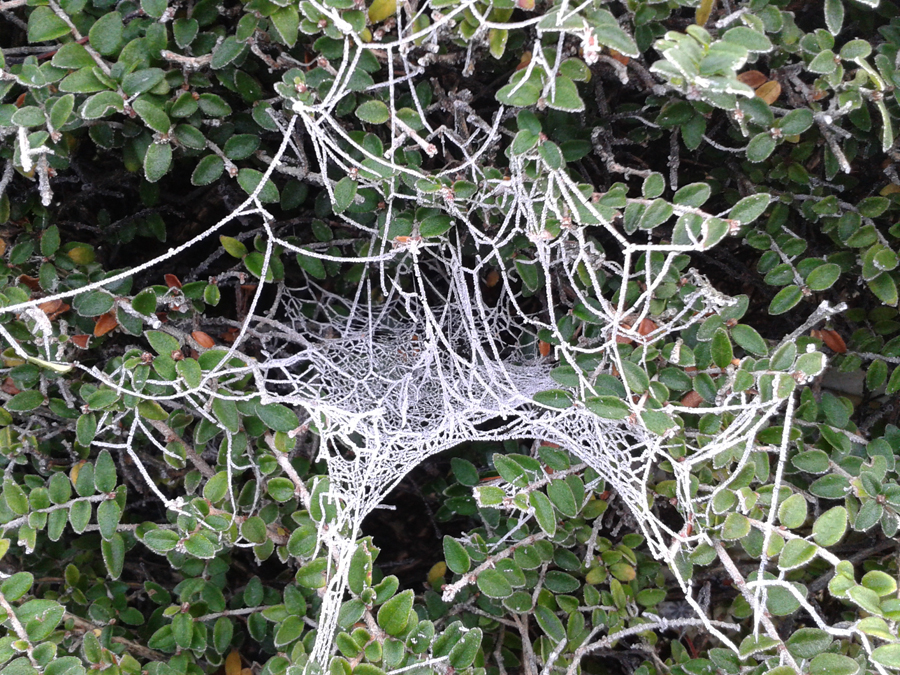
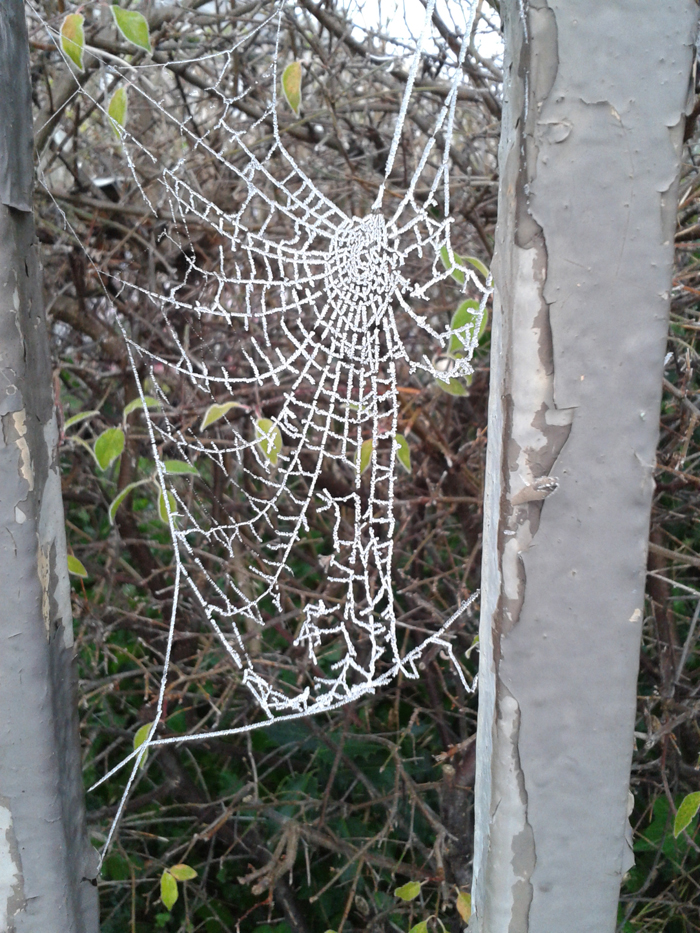
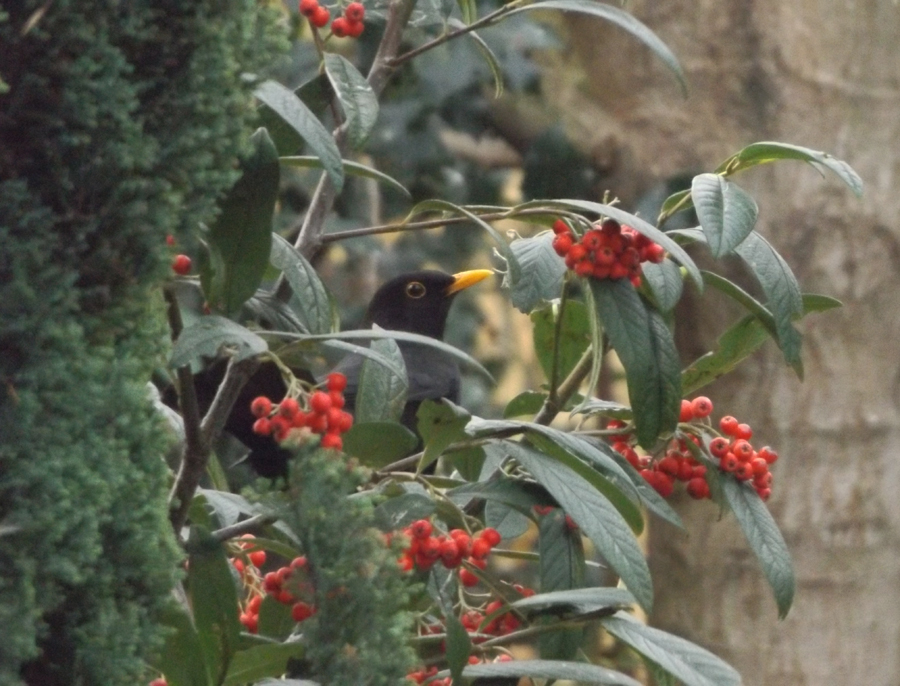
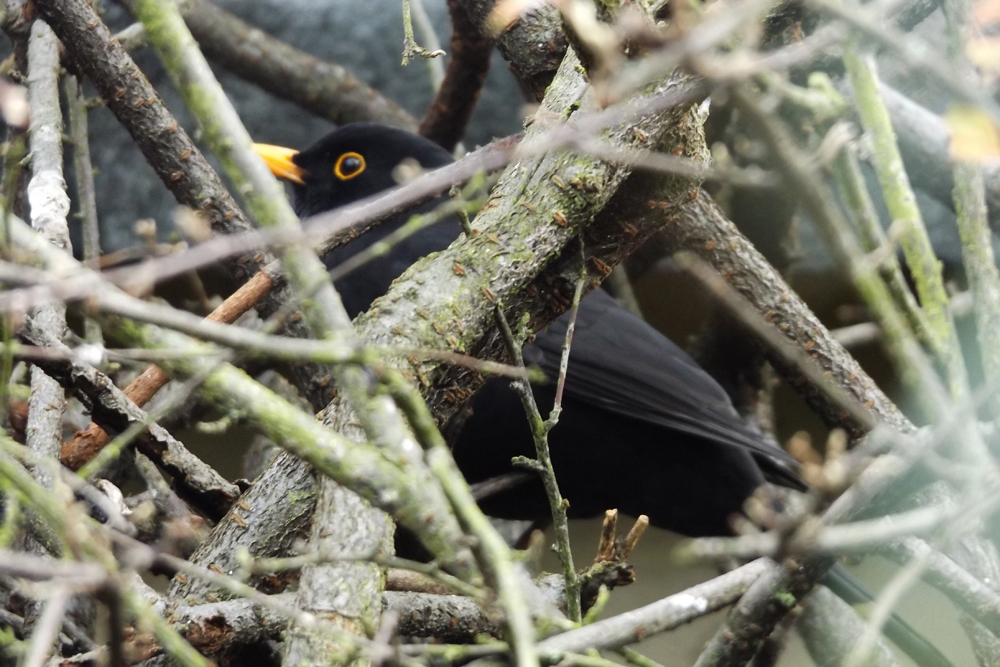

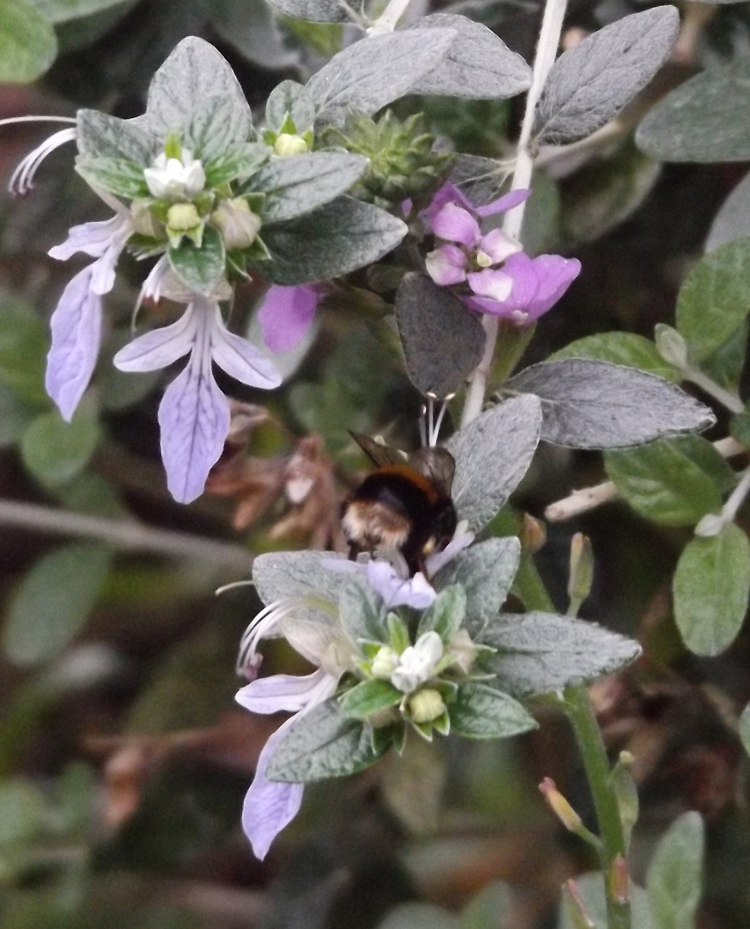
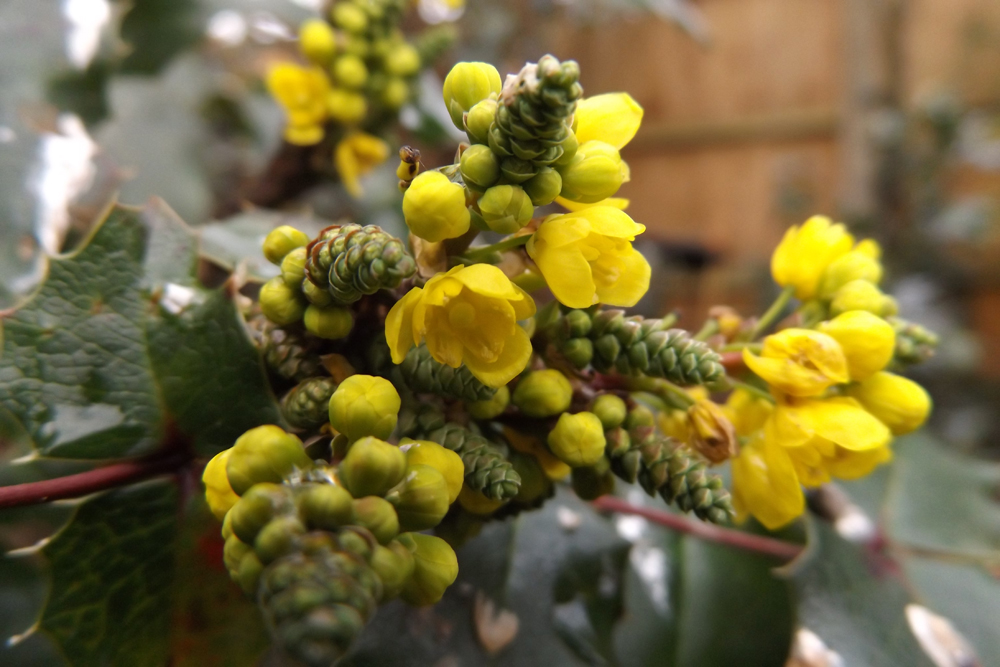
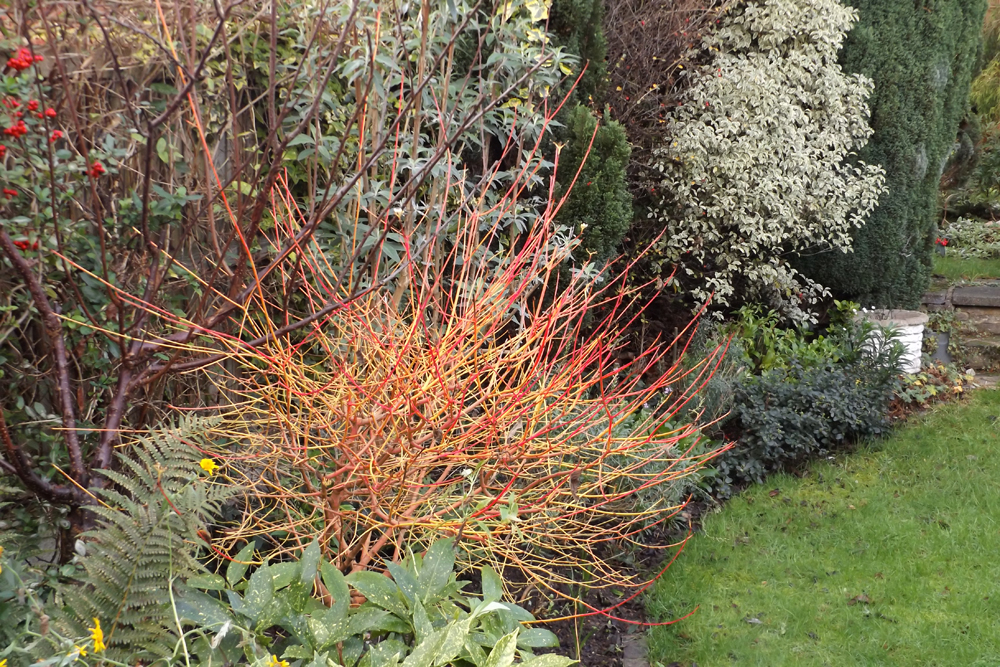

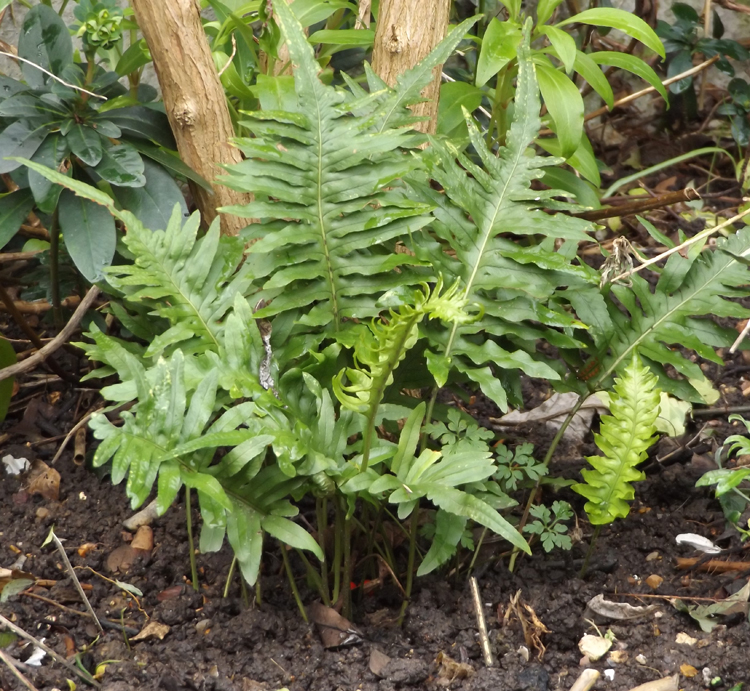


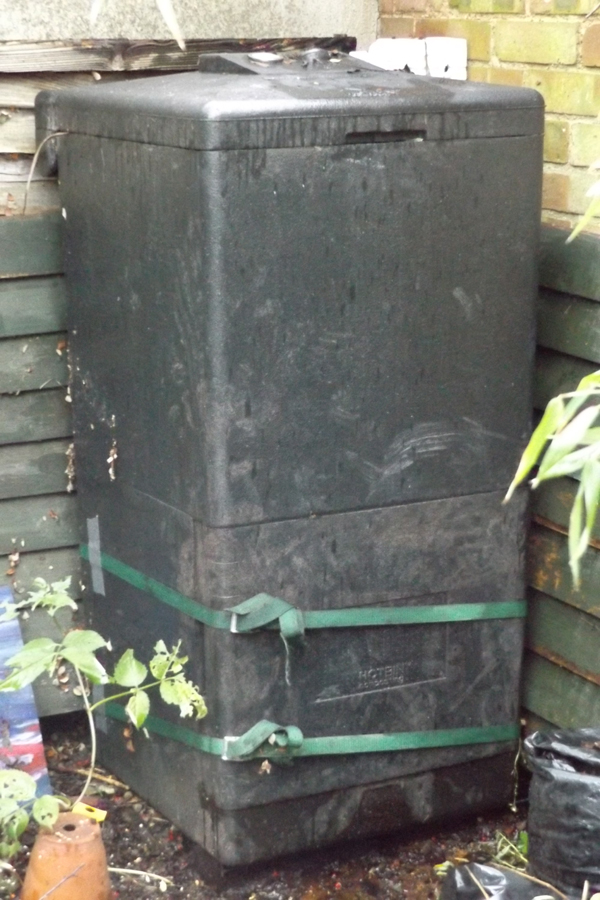
Always enjoy hearing about your garden Karen. Gonna get me a Shrubby Germander…. sounds like a character from a spaghetti western. SX
Howdy there Suzie…
If no one’s heard of Shrubby Germander (and she can be an elusive gal) it sometimes helps to quote the Latin ‘Teucrium Fruticans’. Though it’s one of those names I can never remember. I have recently started using word association, and I now think of it as a tin of peaches.
You have a good day there now y’all…………